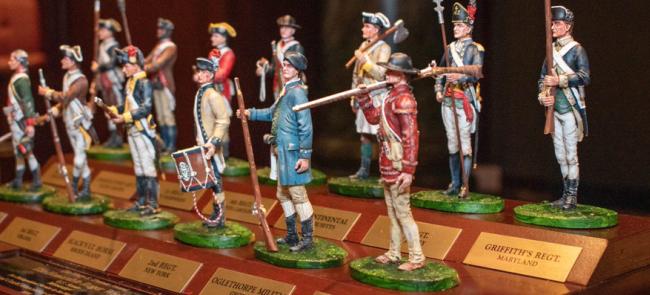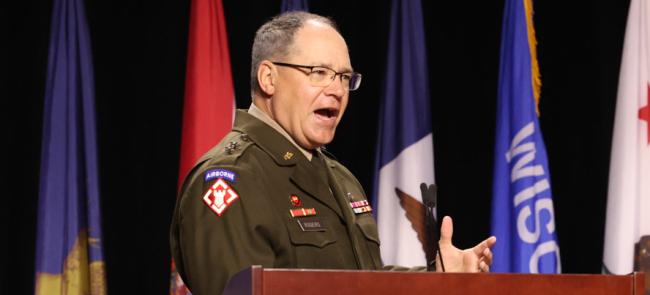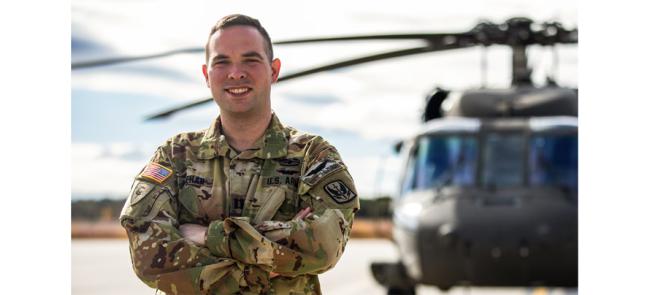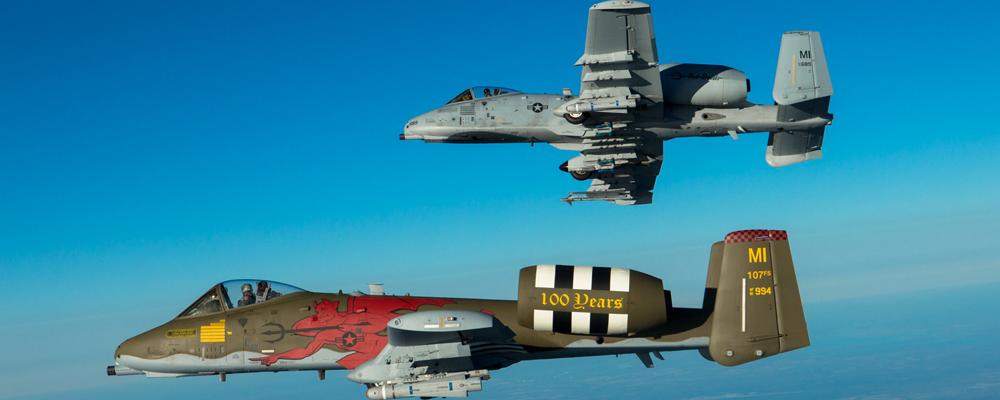
Nearing the End
The A-10 Thunderbolt II is something of an acquired taste. It isn’t sleek like a typical jet fighter. And it would never win a race against an F-15, F-16 or F-35.
But the platform affectionately known as the Warthog has its fans. Many are ground troops who believe they are alive today because the first Air Force aircraft designed for close air support has excelled at the job for the last 40 years.
Protected from most groundfire by what amounts to a titanium bathtub, A-10 pilots can fly low and slow enough over the battlefield to see and target enemy troops, who are known to run from the distinctive BRRRT sound of the aircraft’s 30mm Gatling gun.
The A-10’s badass reputation is a great source of pride to those who fly and maintain the Warthog, such as the Michigan Air National Guard’s 107th Fighter Squadron, part of the 127th Wing at Selfridge Air National Guard Base near Detroit.
“When you deploy with the A-10, the first thing is the U.S. Marines and the U.S. Army come up to you and thank you for being a maintainer,” says Master Sgt. James Moscato, an A-10 maintainer and crew chief. “The A-10 does a really good job of separating the good guys from the bad guys.”
One 107th pilot acquired his taste for the Warthog at an early age. Among Capt. Shane Bilek’s earliest memories is watching his father fly the plane for another Michigan Air Guard unit.
“That’s what made me fall in love,” Bilek says. “I think I can speak for the masses here. The A-10 will always hold a very special place in our heart.”
But no amount of affection can save the Warthog from time. Air Force leaders say the aircraft is too slow for modern Russian and Chinese surface-to-air rockets and plan to fully divest the A-10 by the end of the decade. And Congress, which nixed earlier attempts to retire the A-10, is going along.
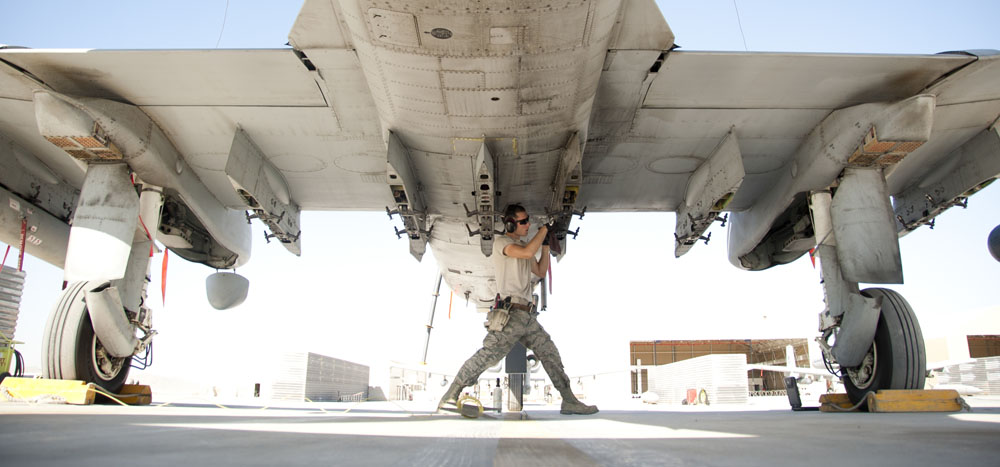
(SENIOR AIRMAN COREY HOOK)
All of which puts members of the 107th in a strange place. Unit members love their current aircraft; it needs to continue being their focus. But they also know they need to push for a new fighter. And so far, the squadron is not in any of the Air Force’s aircraft fielding plans.
Air Guard A-10 units in Idaho and Maryland are in the same situation. The three will be all that’s left of the Guard Warthog community by the end of the fiscal year.
“We’re taking it one day and one sortie and one mission and one battle at a time,” Bilek says. “We’re doing what we can to plan and train for the next mission, understanding that the A-10 does have a lifespan like every other aircraft out there.”
Maj. Jason Davenport, another A-10 pilot with the 107th, says his unit has heard “rumors” about two potential replacements for the squadron’s current airframe — the F-35A Lightning II and the F-15EX Eagle II.
“Depending on what the follow-on mission looks like, at that point in my career, I’d have some decisions to make,” explains Davenport, who is approaching the 20 years of service required for retirement pay. “Whereas some of our younger pilots that are local, that want to fly the fighter mission, I think those guys are going to be hard charged to take on whatever the next task is that this organization has in store.”
Those younger pilots are what bolsters unit hopes that fighter aircraft will remain in its future. The Air Force is short of pilots and can ill afford to squander such assets. The same is true for experienced maintainers, Guard officials say. Both groups would need to be retrained on any new aircraft, but that’s much easier than starting from scratch.
The 107th also has a lot of external support. A NGAUS priority (see Our Take below) is recapitalizing units flying legacy fighters. National Guard Bureau leaders are also pushing to keep all 25 current Guard fighter squadrons. And the Michigan congressional delegation is aggressively supporting the replacement of the squadron’s A-10s with another fighter.
Nearly every member of the delegation — Democrats and Republicans — signed a February letter to Air Force Secretary Frank Kendall urging recapitalization of the 107th’s fleet. Additionally, Michigan Gov. Gretchen Whitmer has pledged to spend nearly $100 million in state funds to improve facilities and infrastructure at Selfridge for a new aircraft.
The letter and Whitmer’s pledge are only the most recent efforts by Michigan elected officials to convince the Pentagon to recap the squadron.
We're taking it one day and one sortie and one mission and one battle at a time.
—Capt. Shane Bilek, an A-10 Thunderbolt II pilot with the Michigan Air National Guard's 107th Fighter Squadron
WHILE TAKING THINGS one day at a time, the 107th is embracing the Air Force’s latest operational concepts. “Really, anything that we’re doing on the regular here at Selfridge is to prepare ourselves for the future battlefield,” Davenport says.
That includes agile combat employment, which requires learning how to launch and recover aircraft in locations other than established airbases (related story here). In August 2021, two squadron A-10s along with two from the active-component’s 354th Fighter Squadron landed on a closed state highway as part of exercise Northern Strike 21. It was the first time the Air Force purposely landed modern aircraft on a public highway in the United States.
Last year, the squadron and the rest of the 127th Wing took things further, performing integrated combat turns on multiple military aircraft that landed on a closed state highway during another Michigan Air Guard-led exercise, Northern Agility 22-1. It was also a historic first. Never had ICTs, which involve rearming and refueling running jets, been conducted on a U.S. public highway.
Meanwhile, ground crews are enhancing their skillsets. For example, many of the maintainers are working on becoming “multi-capable airmen” that can perform numerous responsibilities in a pinch.
“We’ve got guys that can do all different jobs from all different career fields,” says Master Sgt. Joe Masters Jr., a maintainer. “Now, your average crew chief who is used to turning wrenches is kind of turning into like a real warfighter with guns and grenade launchers and things and turning wrenches at the same time. We can’t fight like we did in World War I and World War II.”
Maj. Gen. Paul Rogers, the adjutant general of Michigan, says further developing those skills will help the unit embrace any future mission. “The most important thing for all of us is to be students of our profession,” he charges.
But like most Guard flying units, maintenance remains a source of great pride.
“When we go out to war or we go out to an exercise, when those active-duty pilots see a Guard aircraft, they want to fly those Guard aircraft,” says Maj. Christopher Manley, the commander of the 127th Maintenance Group. “It is because they know the love and the care that we pour into that aircraft. We’re a family. We genuinely care about the pilots that we have.”
They also bring a lot of experience, “There are 21 guys in my shop,” Masters says. “There is over 200 years of maintenance experience in one room.”
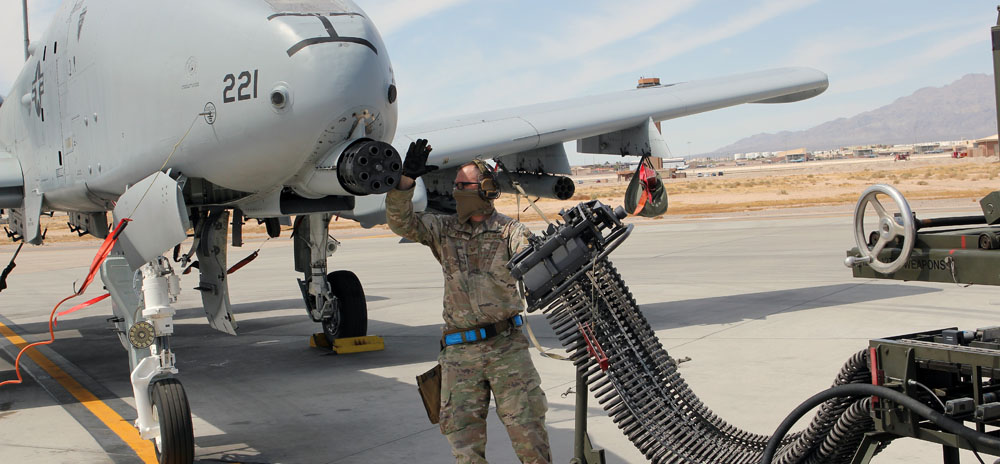
ACROSS WHAT’S LEFT of the Guard A-10 community, leaders wonder if Air Force officials understand what’s at stake.
“We can’t just turn out the lights and shut the doors and wait four or five years for recapitalization to occur,” says Col. Paul “Monty” Kanning, an A-10 pilot with Maryland’s 175th Wing. “The biggest issue isn’t the airplane. The biggest issue is the people. If you downgrade or reduce or completely stop the mission, those pilots and maintainers aren’t going to stay. They’re either going to go somewhere else, or they’re going to leave altogether.”
“It is important for the Air Force to realize the Guard is a critical component of the Total Force,” Kanning says.
“You have a squadron of 611 personnel,” Rogers adds. “It makes no sense not to recapitalize them into a new fighter and maintain that talent and not take advantage of that talent. Keep that talent that we have in the Air National Guard in the Air Force.”
Rogers and unit members also tout the area around Selfridge as a great source of future Guard talent. Detroit Metro Airport, one of the world’s leading air transportation hubs, is nearby. It enables area Guardsmen to easily balance flying commercial and military aircraft.
Bilek and Davenport are examples; Bilek flies for Sun Country Airlines, Davenport for Delta. And the word seems to be out. During a recent pilot-recruiting board, Davenport recalls the wing had to cut off applicants after attracting some 60 people.
Senior Master Sgt. Jeff Koss, the Michigan Air Guard’s recruiting and retention superintendent, adds that the A-10, which he considers a “premier aircraft,” also attracts enlisted personnel.
Yet he believes a new fighter mission will be a boon to both recruiting and retention. “The people who are already in are going to get to try something new,” Koss says. “When you go and buy a new car, everyone wants to hear the stereo.”
Bilek agrees that the unit realizes the end is near for the A-10 and is ready to move on to a new aircraft.
“It’s a very tight-knit family,” he says. “Being a part of it — that family — I don’t really know if I can explain the feeling. But if and when we do get a follow-on fighter mission, you’re going to have a lot of happy people. Because at the end of the day, we’re all fighter pilots at heart.”
Mark Hensch can be reached at [email protected].
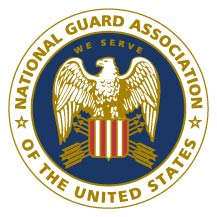
OUR TAKE
Air National Guard fighter recapitalization, the replacement of legacy combat aircraft the Air Force wants to divest with advanced platforms, is a NGAUS priority. Guard legacy aircraft contribute to Air Force combat capacity, and their units have some of the service’s most experienced pilots and maintainers at a time when both are in short supply. Nevertheless, the Air Force has yet to provide a plan to replace the Air Guard’s full legacy fleet. To maintain combat capacity and retain scarce pilots and maintainers, the association seeks accelerated recapitalization of all Guard fighter units with new-build aircraft. To that end, NGAUS advocates Congress include language in the fiscal 2024 National Defense Authorization Act prohibiting the divestiture of Air Guard fighters without a recapitalization roadmap and subsequent language and defense appropriations in the fiscal 2025 defense acts requiring one-for-one platform replacement.

